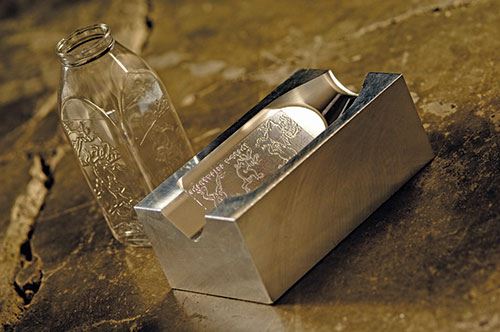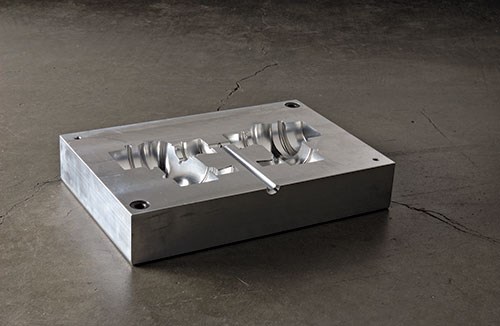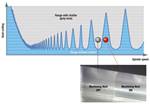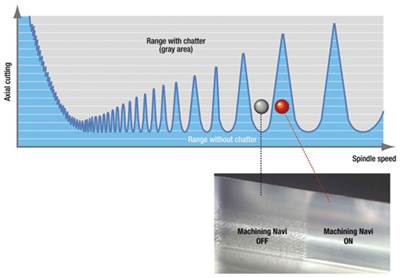Enhance Mold Precision by Going Five-Axis
Here’s how to manufacture large or high-precision, complex molds while maintaining efficiency.
Efficient CNC machining capabilities are more important than ever for moldmakers seeking to maintain a competitive edge in today’s market. Oftentimes, large, heavy parts require intricacies that become increasingly difficult to maintain using a standard three-axis or four-axis horizontal machining center. Switching to a 5-axis CNC machine can provide users with the ability to manufacture large or high-precision, complex molds while still maintaining efficiency.
There are many factors to be assessed when evaluating whether 5-axis machining is right for a particular application. The decision includes consideration of a combination of factors, including the particular machine, control, programming capabilities and process. It is very important to decide what goals will be accomplished by adding 5-axis machining to a mold shop. With goals clarified, the evaluation can proceed.
Look for High-Performance Design
Mold manufacturing demands high-performance machining. Period. Machine tools need to be highly engineered pieces of equipment designed with the capabilities to meet these performance standards. A single-source provider having the ability to design a machine from the castings to the control is the best way to build a 5-axis that can truly deliver the required level of performance.
A bridge-style design is a proven powerhouse for high-performance, 5-axis machining. When engineered with the right CNC control technology, it can allow for an insignificant amount of thermal growth. The thermal growth that is unavoidable can be controlled to a linear axis and can easily be compensated in real-time with control technology that manages spindle temperatures and machine thermal characteristics.
Beyond the 5-axis layout of the machine, many companies are looking for turning tables included within the rotary table. This gives manufacturers the ability to turn cylindrical features instead of milling them, while retaining the accuracy derived from the turning process. Having the ability to turn cylindrical features provides a tremendous reduction in cycle time.
The Control Factor
Controls must be able to process as much information as possible in as short a time as microseconds. The ability to have the control communicating precise data to the axis servos involves more than just the feedback of the encoder. While it’s true that accurate axis feedback is required, the control loop also needs to be able to read information from the thermal sensors, glass scale, control software, and rotary encoder to make decisions and respond quickly enough to compensate in real time. To do this, the control must have a processing loop in low single-digit microseconds.
By accomplishing all of these things, the user never has the control chasing information. Without this feature, the machine falls out of real-time compensation and falls into post-time adjustments, leaving the user vulnerable to inaccuracies.
In addition to high-performance controls, most moldmakers are looking for high-level programming functionality that allows for easy, customizable adjustments. The tool center point control and the fixture offset function are two features that allow programmers to plan for part zero regardless of the setup on the machine.
In the past, 5-axis controls did not have the ability to track the part zero and the tool tip location simultaneously without using the centerline rotation. It’s important to be aware of where the part existed on the machine in the z-axis. The XYAC would need to be dialed in to the true center of the two rotary axes. If for some reason there was an error in the fixture or part, this would render the part as scrap.
Commonly, moldmakers batch parts based on errors, then run batch one, offset the machine and run batch two and repeat. This process is very time consuming and increases the risk of making scrap, delaying delivery and adding costs.. Older and less advanced controls need to use inverse time to handle linear and rotary axis movement to achieve accurate results. Inverse time feed did not allow for feed changes at the control.
Today, with Tool Center Point Control (TCPC), manufacturers can let the control handle all the feed command calculations, which will allow the programmer to program inches per minute (IPM) which is much easier for users.
Fixture offset functions for 3+2 and simultaneous 5-axis with TCPC allows the programmer to more heavily rely on the control. This feature allows fixtures to be made and used without having to be perfect because the control will compensate for any errors that may occur. Many programs are now universal to machines configured similarly. If a spindle probe is being used, it allows for further automation to occur, which in turn, lessens the chances for operator error.
Other control features that can enhance processes are the tool tilt control or the posture control. This helps correct errors made by numerical control programs. In many cases, when toolpaths are driven by CAD, NC programs tend to have turnovers and fluctuations, causing the toolpath to produce erratic surface finishes and creating longer cycle times. The tool tilt control filters the NC program and corrects errors, thus improving finishes and reducing cycle times.
Summary
Making the switch to a 5-axis machine gives moldmakers the ability to manufacture larger, heavier molds without sacrificing precision or accuracy. Make sure the machine tool and the control are able to handle the intricacies required for precise, accurate finished molds.
Related Content
Three Good Reasons to Switch from Three- to Five-Axis Machining in Moldmaking
Five-axis machining technology is a great tool in the moldmaker toolbox.
Read MoreSolving Mold Alignment Problems with the Right Alignment Lock
Correct alignment lock selection can reduce maintenance costs and molding downtime, as well as increase part quality over the mold’s entire life.
Read MoreMold Innovations Power Unique Auto Lighting Elements on Hummer EVs
Diamond machining, electroforming of micro-optical inserts and modified latch-lock system help injection molds produce unique forward lighting elements.
Read MoreMoldmakers Deserve a Total Production Solution
Stability, spindle speed and software are essential consideration for your moldmaking machine tool.
Read MoreRead Next
How to Eliminate Chatter
Here are techniques commonly used to combat chatter and guidelines to establish a foundation for optimizing the moldmaking process.
Read MoreReasons to Use Fiber Lasers for Mold Cleaning
Fiber lasers offer a simplicity, speed, control and portability, minimizing mold cleaning risks.
Read MoreHow to Use Continuing Education to Remain Competitive in Moldmaking
Continued training helps moldmakers make tooling decisions and properly use the latest cutting tool to efficiently machine high-quality molds.
Read More




















